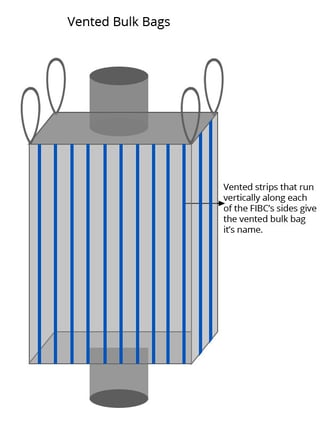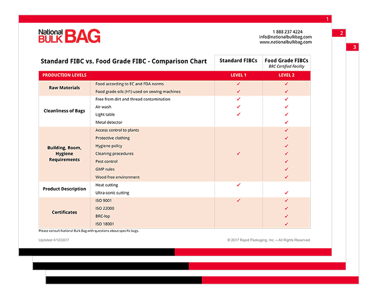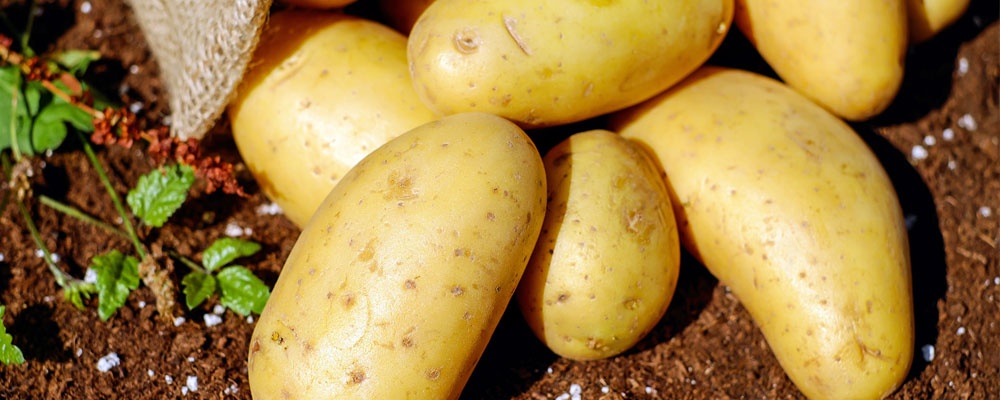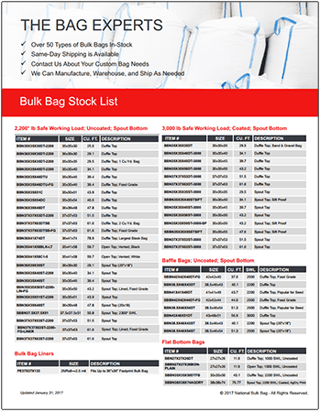Depending on your product and/or application, your bulk bag needs change. FIBCs have a multitude of uses across a wide variety of industries. Because of this, a very large number of specialty bags have been created to fit unique products applications in order to better serve the users.
One of these specialty bags is a vented FIBC. Vented bags are unique and have specific uses and applications that make it particularly relevant in certain industries.
 What is a vented FIBC?
What is a vented FIBC?
A vented bulk bag is constructed almost identically to a standard FIBC. It offers the same general construction options (spout top/bottom, duffle top/bottom, color options, etc.). The biggest difference between vented bags and standard bags is the thin strips along all four sides of the vented FIBC.
Instead of the standard polypropylene weave (woven polypropylene), these strips have single strands of fabric running horizontally that allow air to flow freely into the bag, thus giving these bags their vented property.
Vented bulk bag use
Vented bags have a variety of uses and applications; however, they are particularly useful for keeping contents dry by exposing them to outside air and allowing them to breathe.
Dry Storage
For example, firewood is often collected/chopped with moisture present in the wood. In order to move, store, and eventually sell the firewood it is ideal if the firewood is allowed to dry out and stay dry for storage/sale. Vented bags are perfect for this situation; the vents allow the outside air to dry the wood after it is collected and stay dry during storage.
Agriculture
An industry where vented bags are particularly useful is the agricultural industry. Certain produce needs to be stored with proper ventilation in many agricultural applications. Vented bags are perfect for these applications as they allow optimal airflow. A great example of this is potatoes. Potatoes need to be stored with plenty of airflow in order to prevent them from sprouting and/or molding making vented bags the preferred option.
Thanks for reading!
 Thanks for reading our quick guide to food grade bags! We hope you found our quick guide useful and informative.
Thanks for reading our quick guide to food grade bags! We hope you found our quick guide useful and informative.
Are you interested in purchasing food grade bulk bags? If so, you'll want to download our free buyer's guide to food grade bulk bags!
This guide will help you make the proper purchasing decision when considering food grade FIBCs. You'll learn about the standards, certifications, and specifications that make food grade bags unique.
Click the button below to download the Buyer's Guide to Food Grade Bulk Bags and learn everything you need to know before purchasing food grade FIBCs!






